Australian ELICOS reached 20-year low in 2021 but recovery is now underway
- Australia’s ELICOS sector (English Language Intensive Courses for Overseas Students) has lost nearly AUS$2 billion due to long-term border closures during the pandemic
- Enrolment dipped in 2021 to levels not seen since the early 2000s
- The most recent visa and enrolment data, however, points to sharp increases in commencements through April and May of this year
“The past two years has been devastating for our English language teaching sector here in Australia,” said English Australia CEO Brett Blacker. Mr Blacker was speaking during a 26 July webinar to present key findings from the association's 2021 annual report, in collaboration with English Australia's research partner BONARD. He explained that total student numbers (including both onshore and offshore students) fell by -56% last year, from 90,130 in 2020 to 39,735 in 2021. Student weeks, meanwhile, dropped by -59%, from 1,220,603 in 2020 to just under 500,000 last year.

In total, the ELICOS sector has seen a drop of 130,000 students from pre-pandemic levels in 2019 through 2021. “Essentially, that represents a -77% market decline over the two-year period where borders remained closed during the COVID-19 pandemic,” adds Mr Blacker. “This also represents a 20-year low in student numbers for Australia. Effectively as we’ve moved into 2022, we’ve been tracking at numbers that were lower than they were in 2002.
There was a corresponding drop in the sector's economic impact as well, which dipped -61% to AUS$439 million in 2021. Mr Blacker added that the ELICOS sector has lost just under AUS$2 billion in value since the start of the pandemic.
Where did students come from?
As we see in the following graphic, the largest regional decline in 2021 was registered by Europe (-74%). The largest proportional decline, however, came from Asia where a -50% decrease year-over-year resulted in a loss of roughly 28,000 students from the region.
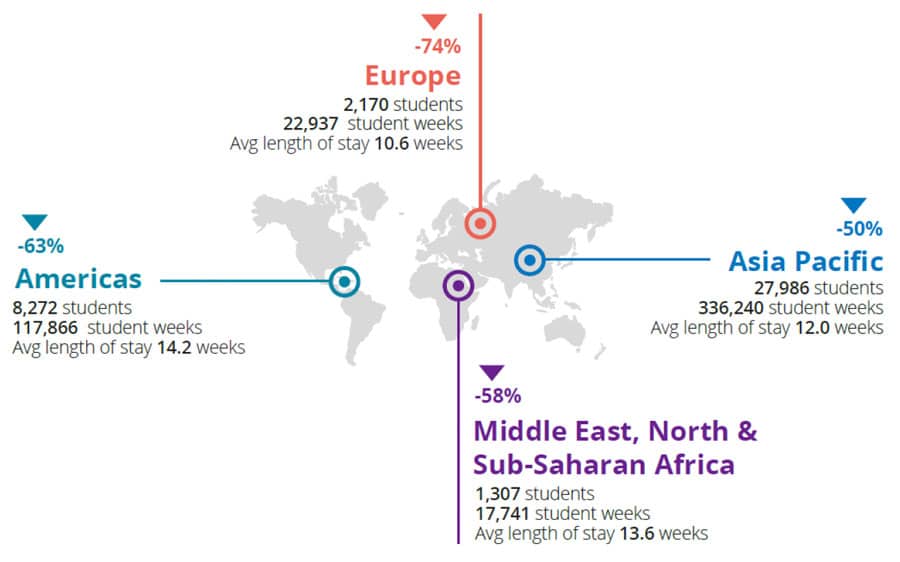
The top ten sending countries remained consistent across 2020 and 2021, and those ten markets accounted for 74% of all ELICOS enrolments in 2021.
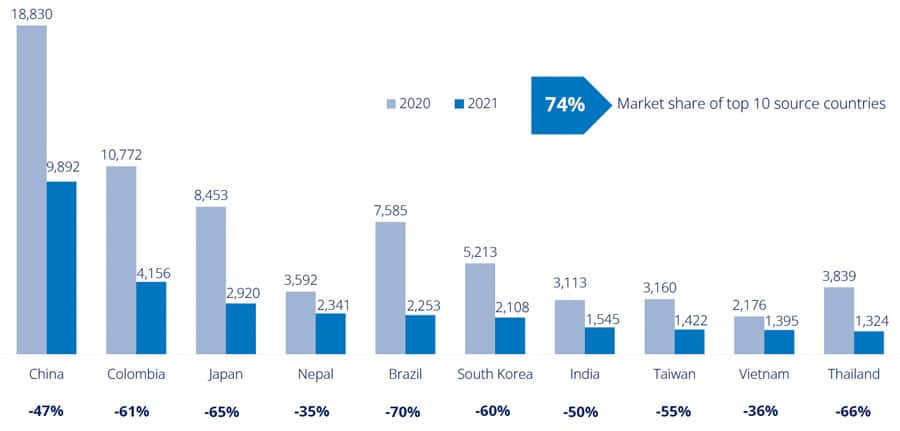
Roughly seven in ten students were enrolled in language learning programmes based within universities or VET institutions, with the balance in independent ELICOS centres.
The role of online delivery
Of the nearly 40,000 students enrolled in ELICOS programmes in Australia in 2021, just over 11,024 (or about 28% of all students) were studying entirely in online programmes. Of those, just over 2,000 were in Australia, with nearly 9,000 studying from offshore.
Nearly all (95%) of ELICOS centres in Australia delivered online programmes in 2021, and a similar proportion (88%) intend to continue online delivery going forward.

Recovery coming into focus
When responding to the English Australia survey this year, nearly half of ELICOS centres (43%) said they expected to recover 21-40% of their pre-pandemic business volumes in 2022. Looking ahead, many centres are taking a longer view for rebuilding enrolments with 80% expecting to reach pre-pandemic levels by 2024.
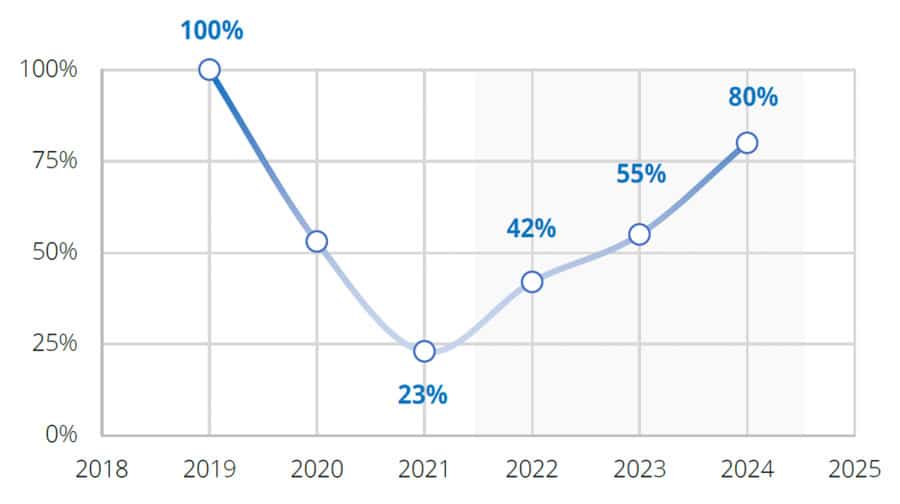
Stepping outside of the survey responses for the annual report – and drawing instead on the latest visa and enrolment data for year-to-date April 2022 – English Australia is able to point to some very hopeful signs this quarter.
First, commencements are up 4.4% through YTD April 2022. "This represents the first increase we have seen in two years," noted Mr Blacker. "The good news is [the forthcoming data for] May is actually showing an increase of 19.6% [in commencements]."
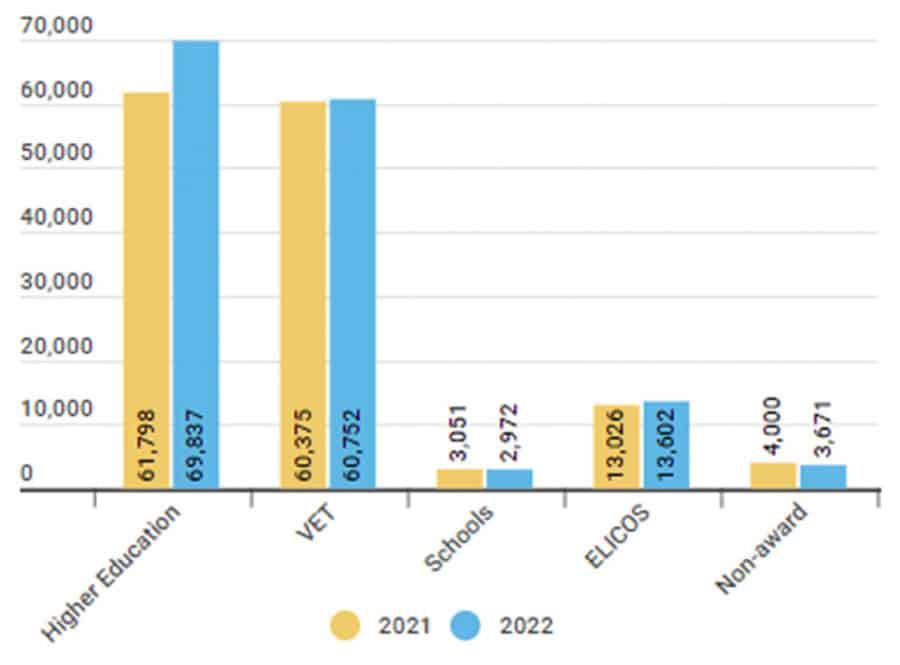
Most of that growth through April is coming from "really strong performance out of Thailand", as we see in the illustration below, along with notable growth out of Japan and Brazil.
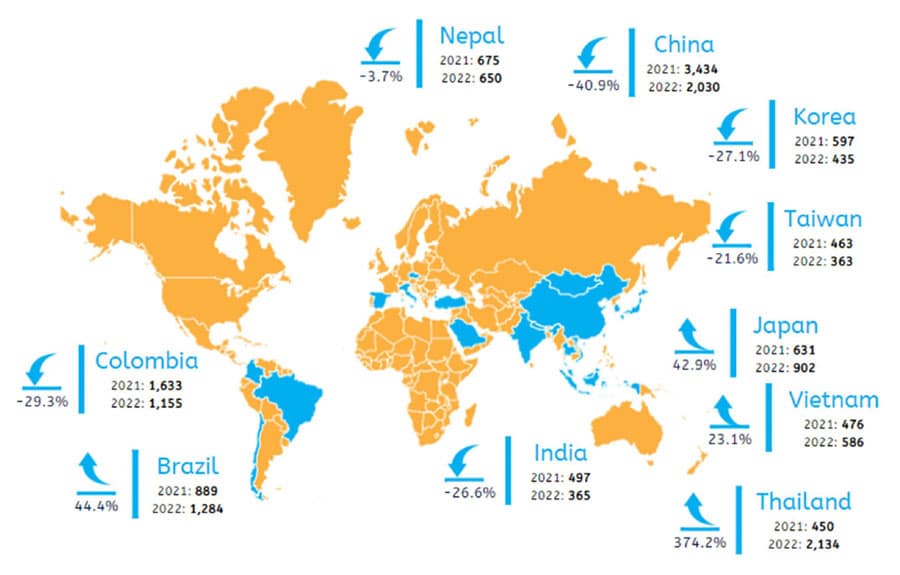
Visa grants are up this year as well, by just under 20% through April 2022, and visa lodgements (that is, the number of new visa applications files) are roughly 14 times higher than the same period in 2021.
For additional background, please see:
- "Survey shows Australia is 'well poised to win back market share' as a top study destination"
- "Australian visa data indicates continued recovery through first half of 2022"
- "Australian border closures cost ELICOS sector AUS$1.2 billion in 2020"
- "Australia: ELICOS numbers holding stable into final quarter of 2019"


















